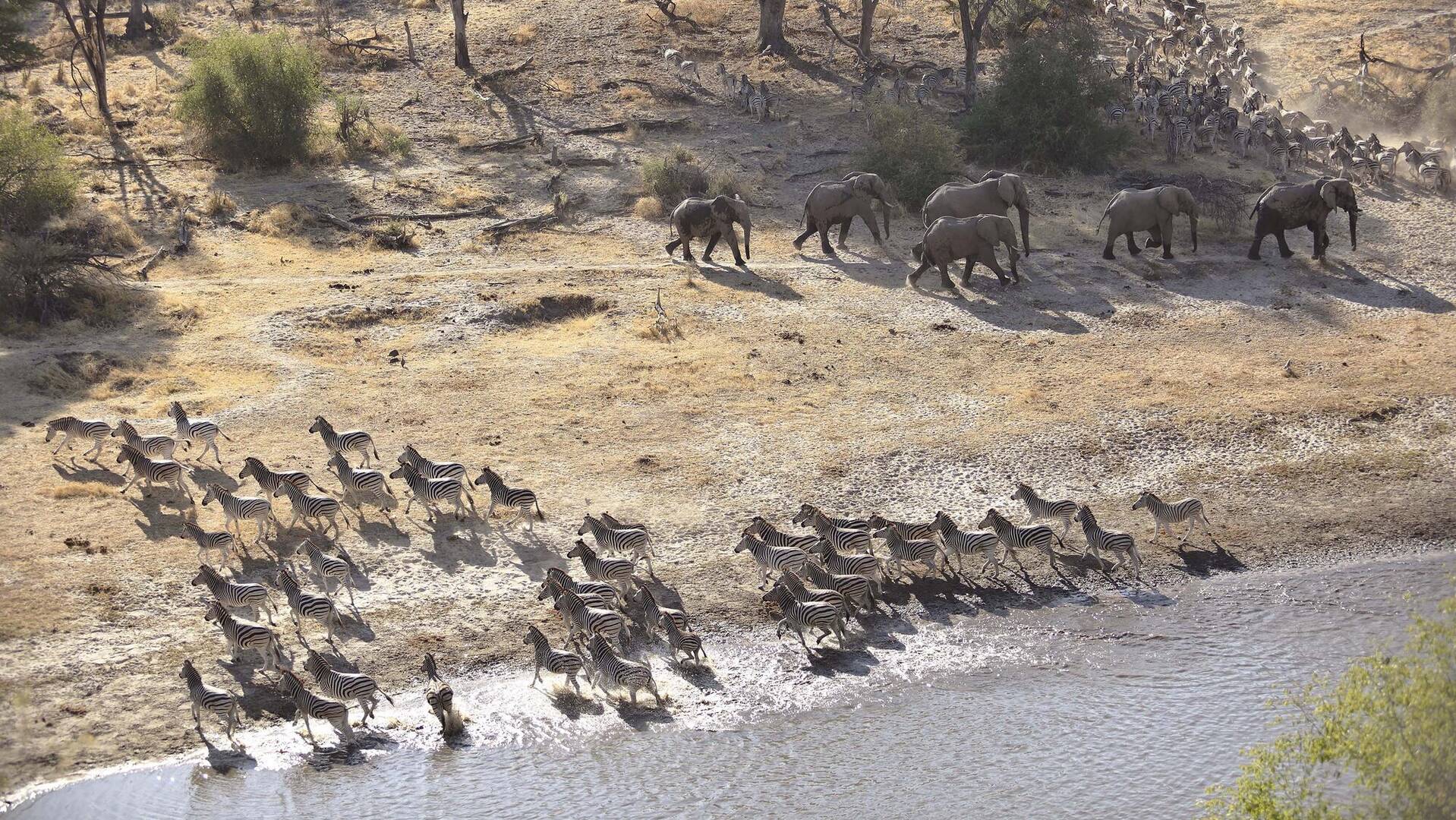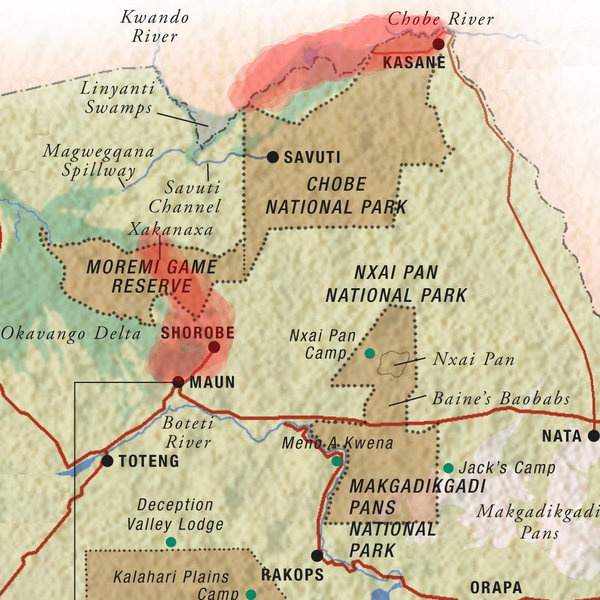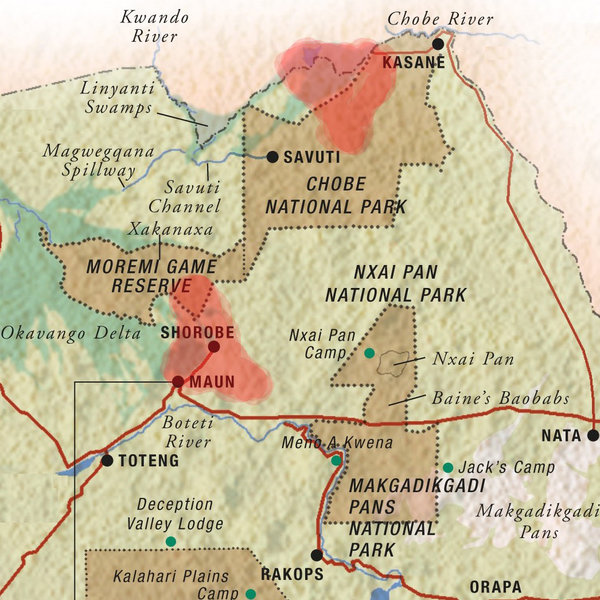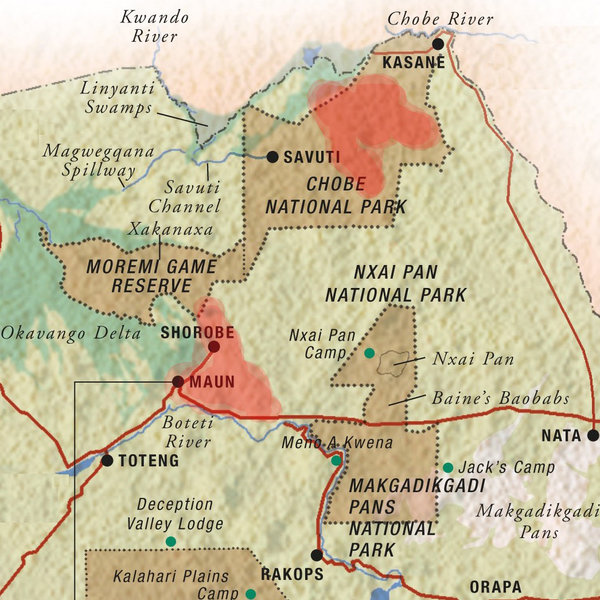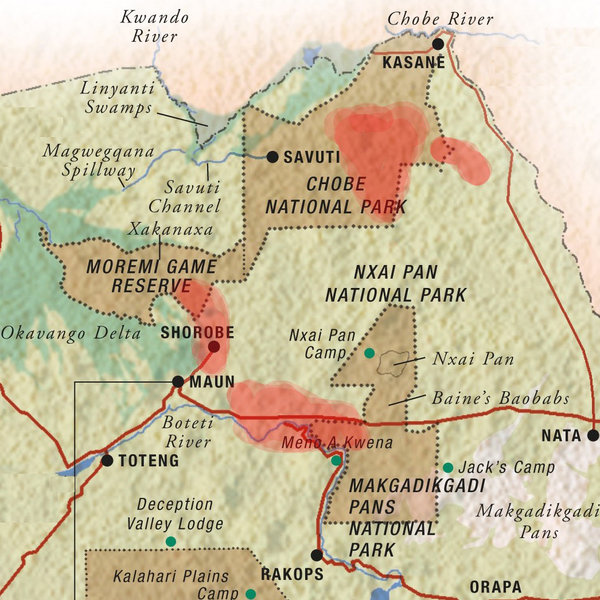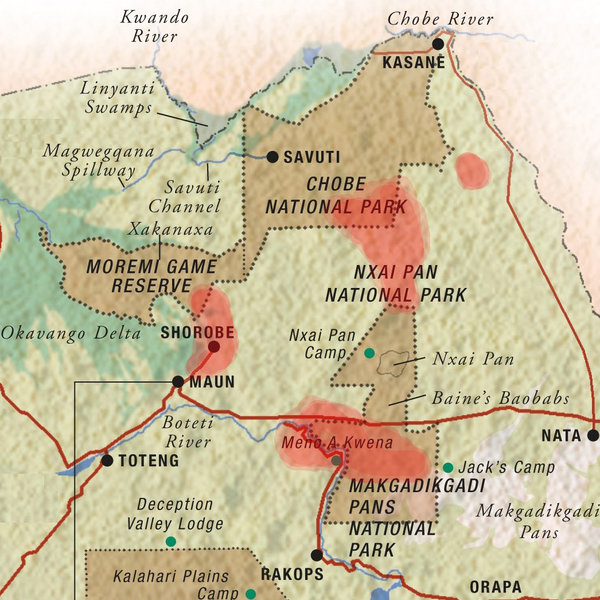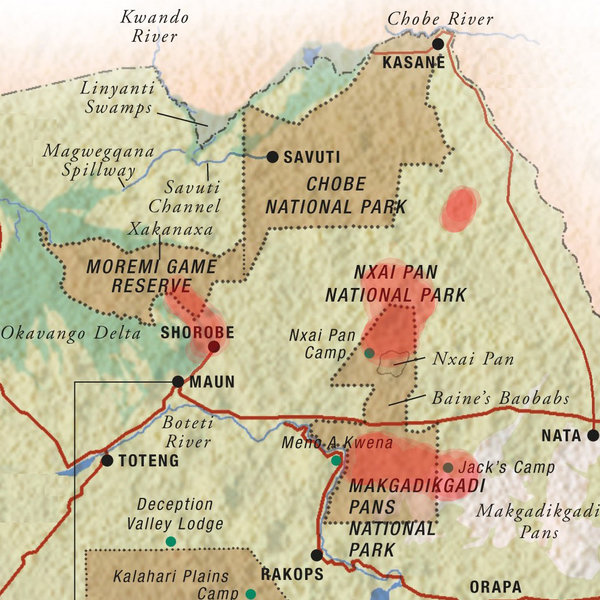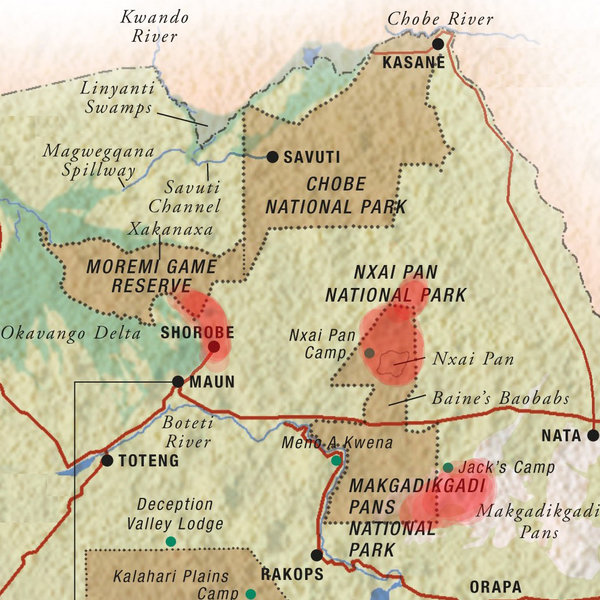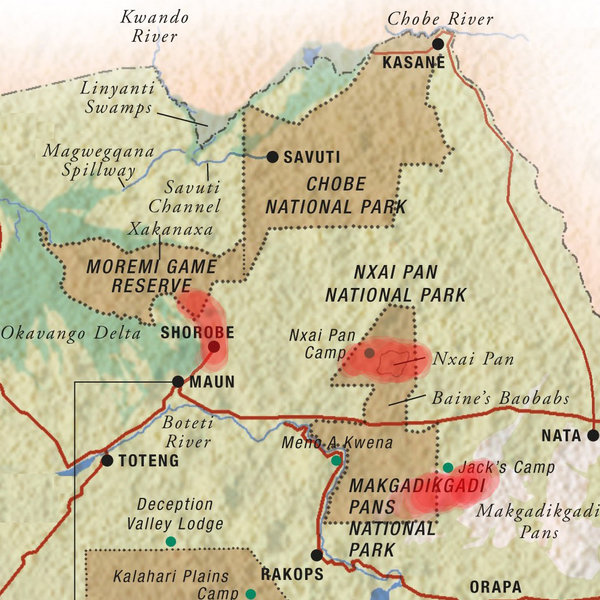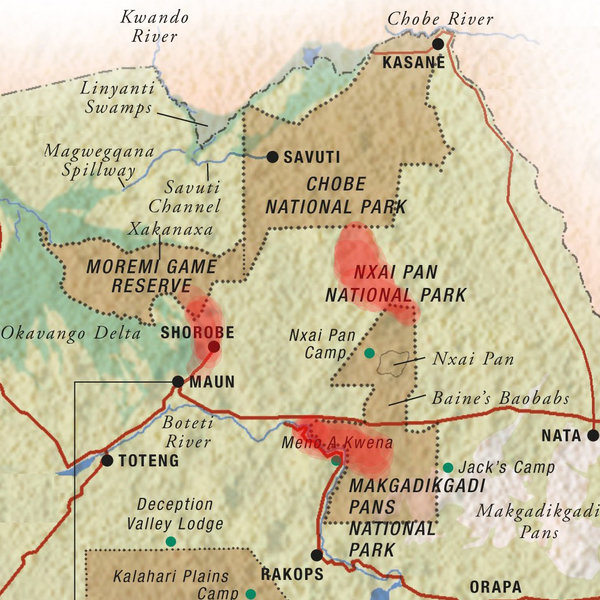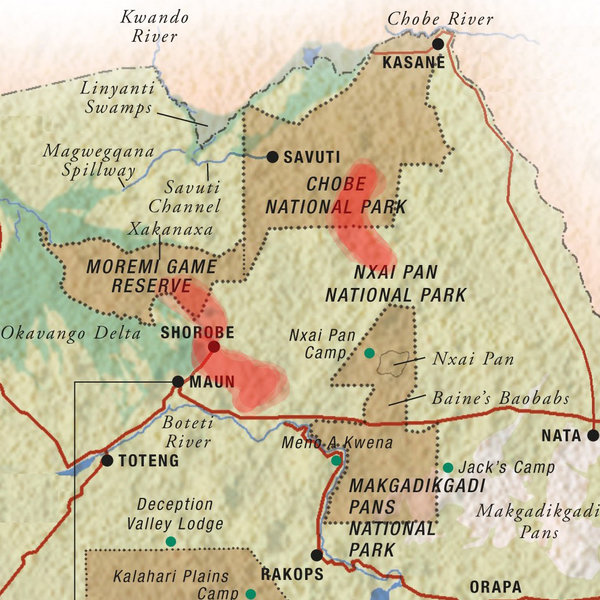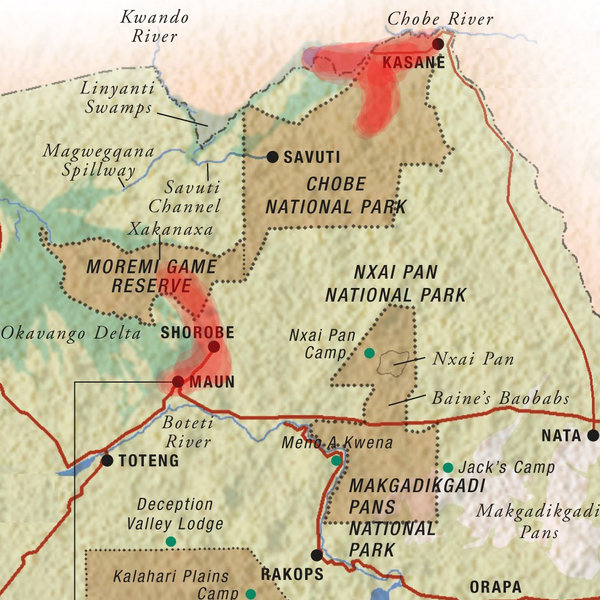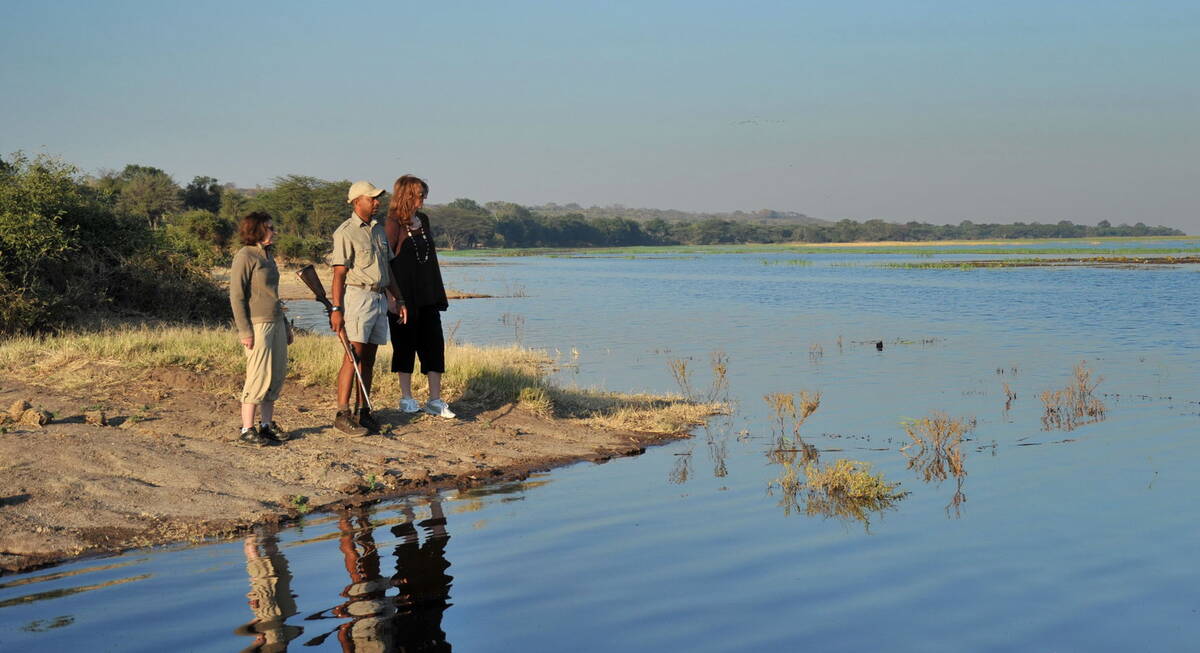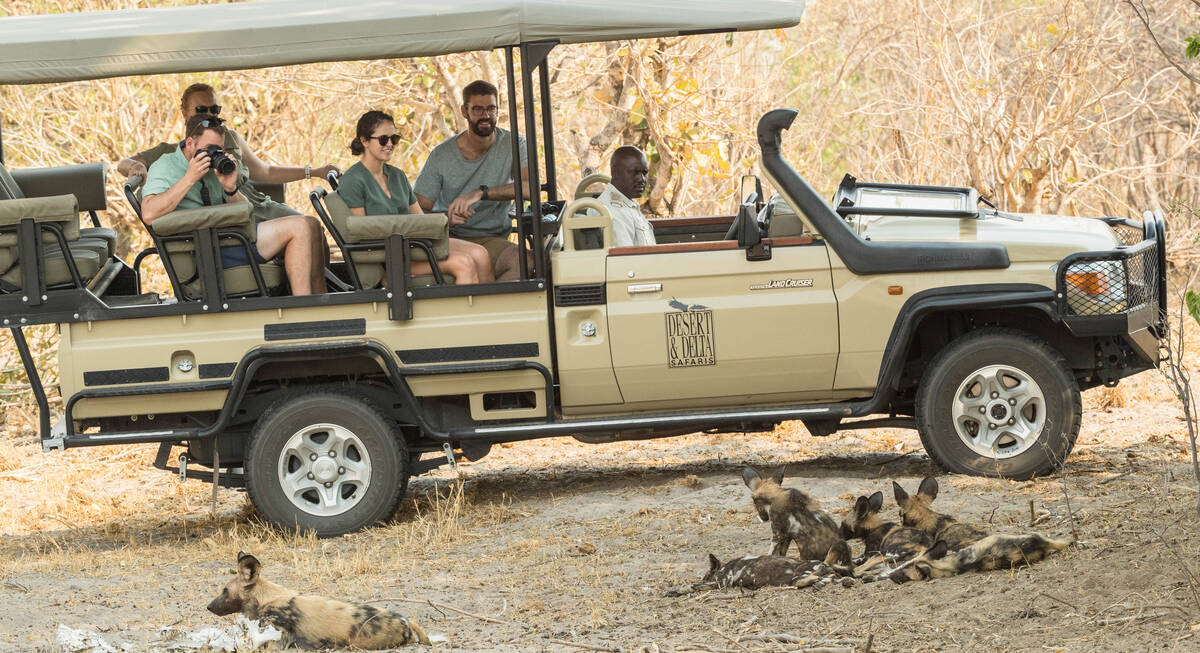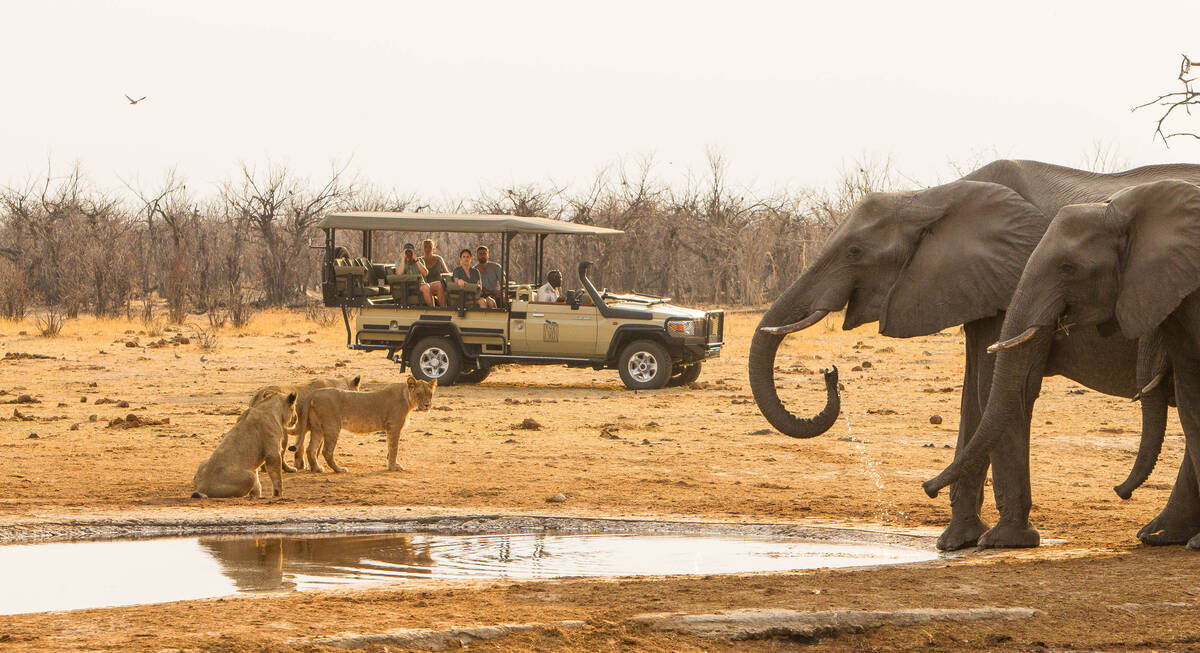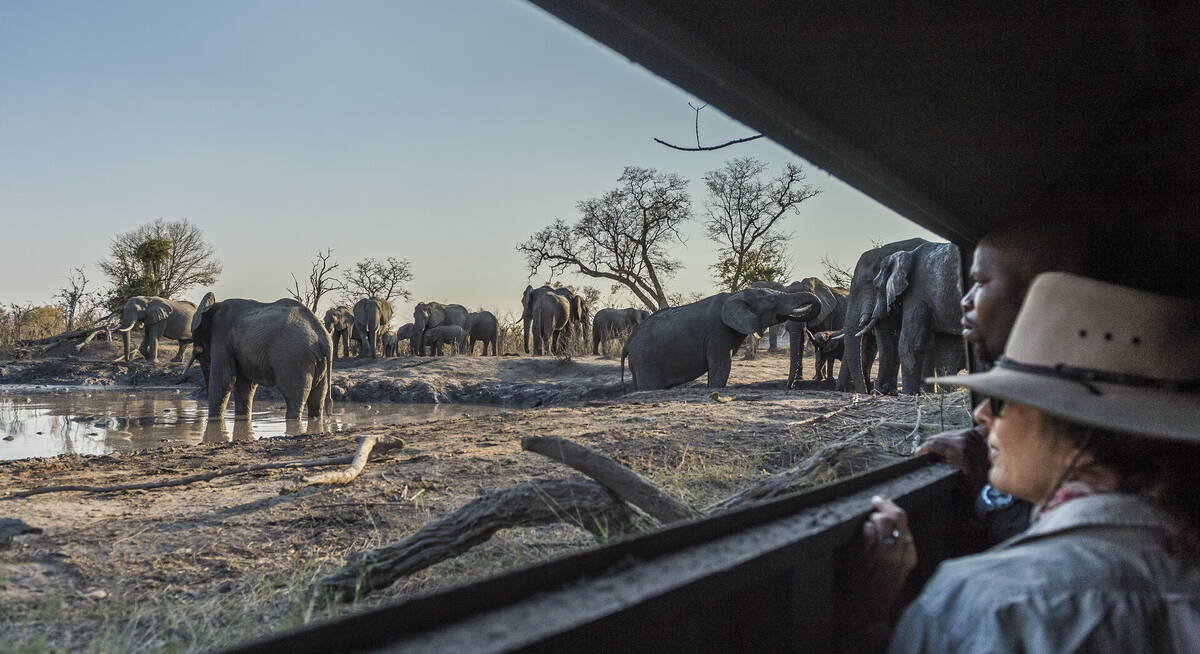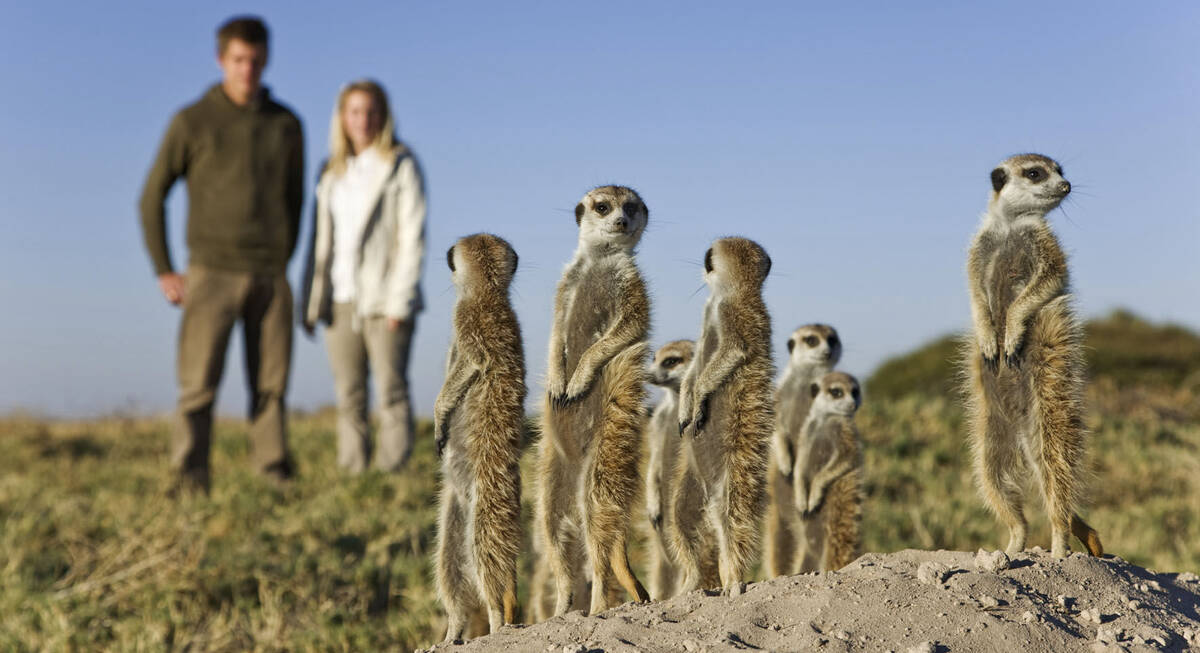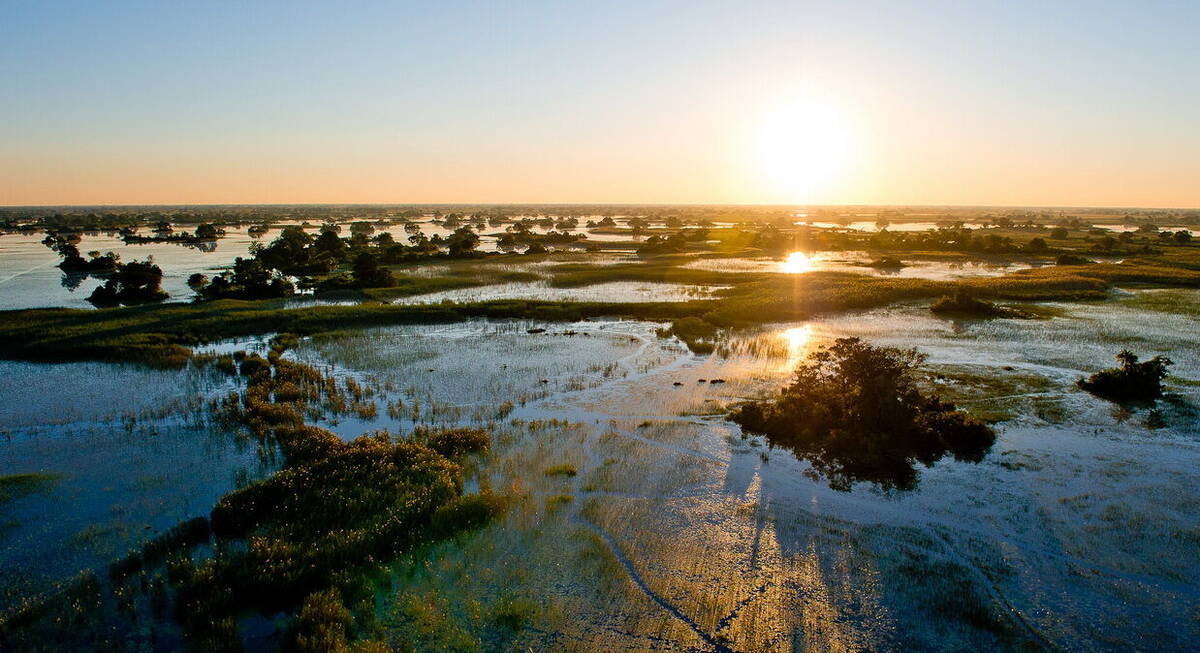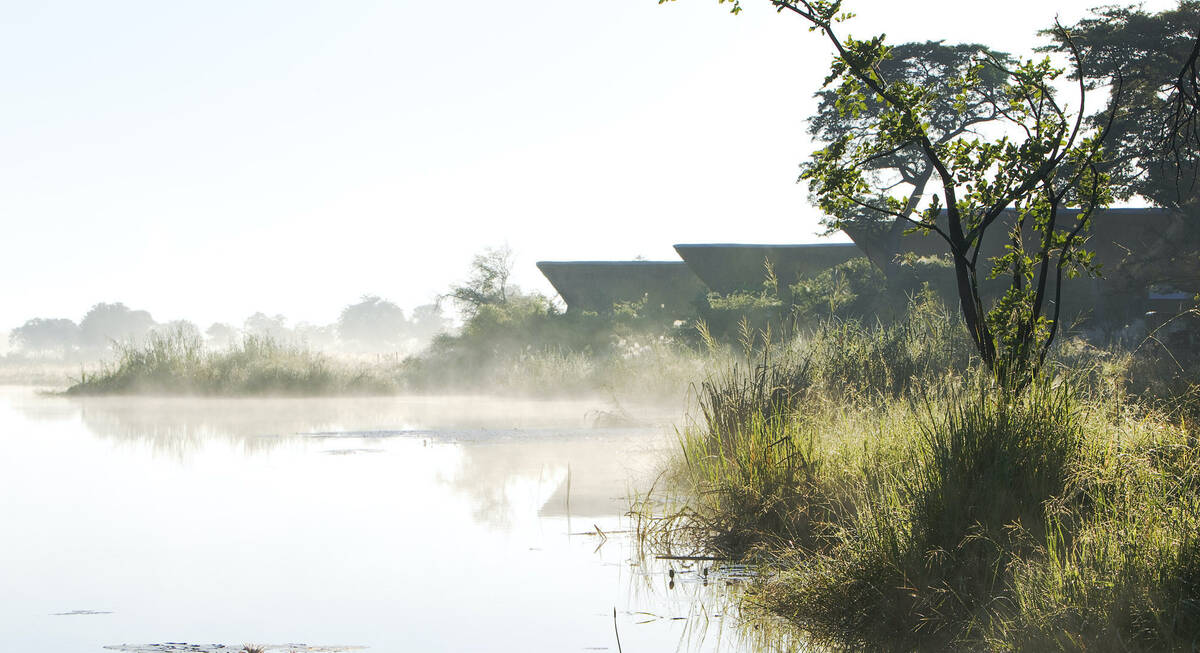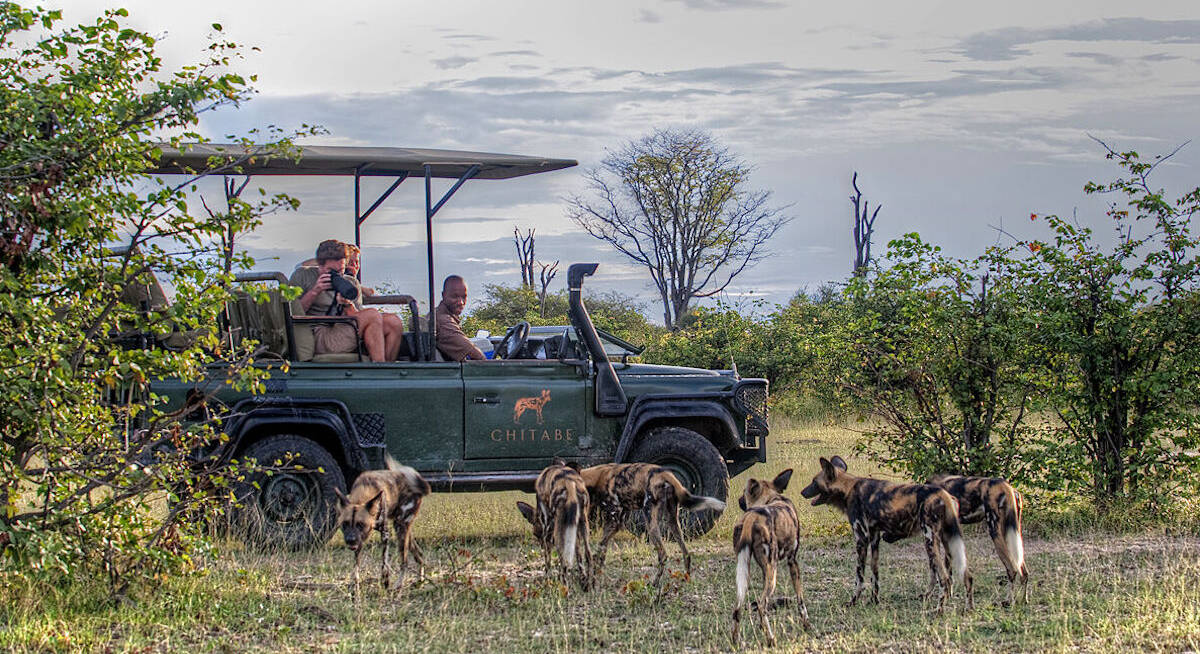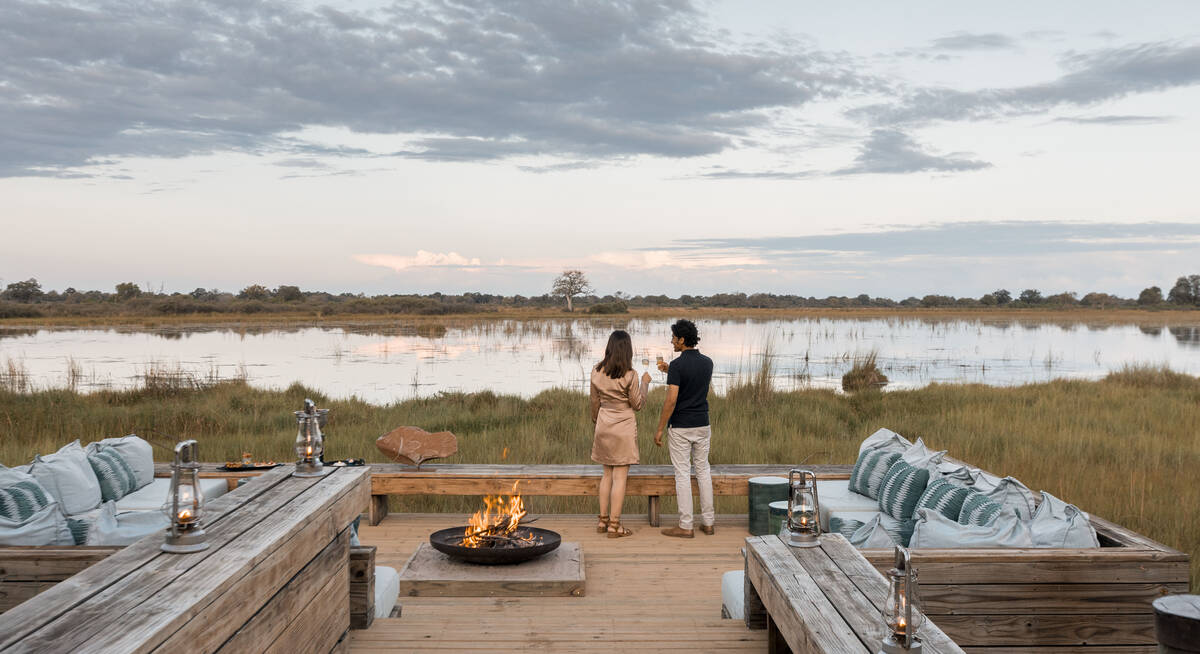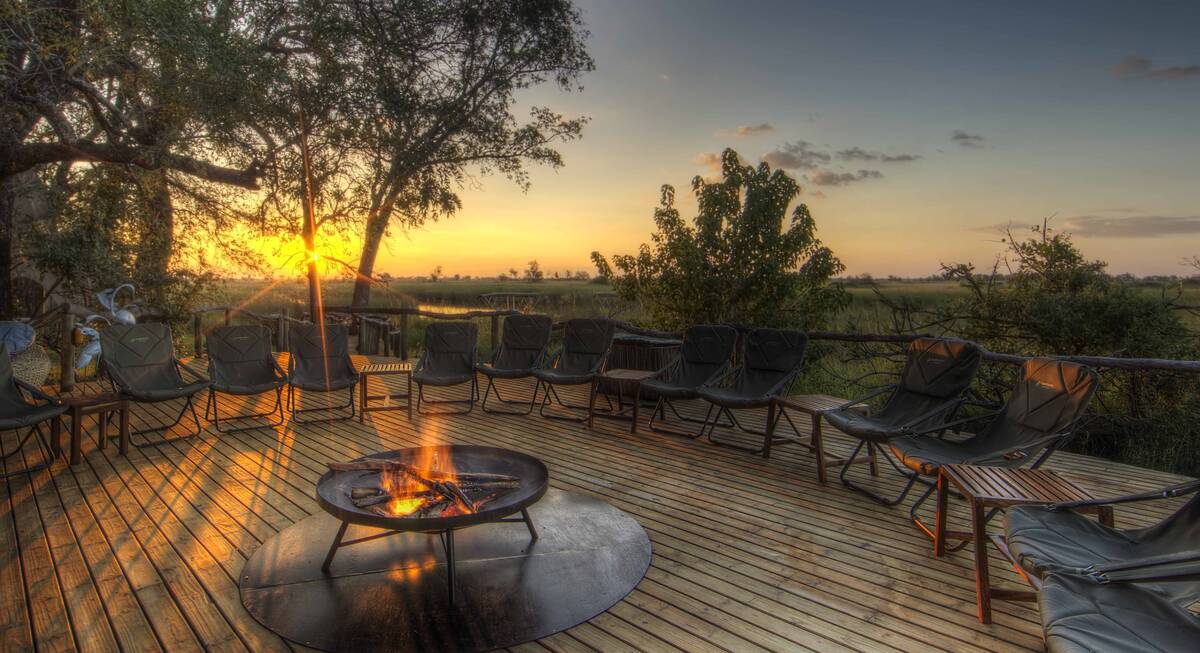Jun to end-Nov: dry season herds concentrate besides the Chobe and Okavango rivers.
Early-Dec: The rains starts: the herds begin their journey to the open interior of Botswana.
Dec: the herds travel in very directly to their wet-season feeding grounds - although...
Some of the zebras from Chobe stop over temporarily, en route, at Seloko Plain.
By early Jan: most of the zebra herds have reached Makgadikgadi and Nxai areas.
Jan: zebras which stopped over at Seloko Pan, make the final move to the plains of Nxai Pan.
Jan to March; zebras enjoy the nutritious grazing in Nxai and Makgadikgadi Pans.
End-Feb: The first herds leave Nxai and Makgadikgadi for the Okavango-Chobe rivers.
By end-March: the last zebra herds are heading north and west.
Mar-Apr their journeys north and west are not as fast or direct as the southward journey.
April to early July zebra herds arrive in the Okavango and Chobe areas.
The study indicates that these animals stay for around 80 days in the Nxai Pan National Park – typically during December, January and February. They mostly stay in the pan itself, but some also explore the surrounding grasslands.
The zebras then start their return journey at the end of February or in early March. Surprisingly, the return route isn’t usually as direct or quick as the southward journey. Most of the zebras take around 80 days to return to the northern riverfront area of Chobe National Pak, and typically travel about 500-800km to get there.
Depending on the return route, the zebra arrive around the Chobe Riverfront area in April, May, June or even early July, where they stay until around December – before starting their journey again.
The Makgadikgadi zebra migration
In recent years, Botswana has again started to host another smaller zebra migration, which travels a similar distance at a similar time.Anecdotal evidences from the first half of the Twentieth Century points to the existence of a zebra migration covering about 250km from the south-eastern Okavango Delta to the grasslands of the Makgadikgadi Pan National Park.
However, in the 1950s and 60s, Botswana put up a series of extensive veterinary fences. These were erected in response to the EU’s insistence that Botswana must have an effective strategy for combatting and controlling outbreaks of foot-and-mouth disease in the national herd.
These fences stretched for hundreds of kilometres; effectively partitioning the country. So from about 1968, the route for this migration was blocked by fences: no zebra could migrate.
It wasn’t until around 2004, these fences were removed.
It’s worth noting here that the average age for a zebra in the wild is about 12 years. Foals born in 1968 would typically live until around 1980; none would still be alive in 2004. So no living zebra could possibly remember this route.
However, within three years of the fence being removed, some of the zebras from the south-eastern Okavango Delta started to migrate again.
Related to the rainfalls in the Makgadikgadi Pan National Park, which usually start around the end of November and early December, the zebras start their journey. The migration leaves the Okavango and reaches the lush Makgadikgadi grasslands after a few weeks, having covered about 250km. The animals stay in the Makgadikgadi Pan National Park for about two and half months before they return back to the Okavango Delta in March. Then they’ll typically stay there during the dry season: July, August, September, October and perhaps early November.
Studies suggest that the zebras migrate to the Makgadikgadi National Park because the grasses have a higher content of protein and minerals than the ones in the Okavango Delta.
Surprisingly only 55% of the zebras actually migrate to the Makgadikgadi, with about 45% staying in the Okavango area for the whole year. The scientist don’t yet know why some stay and the others migrate.
Other great African migrations
► The Serengeti wildebeest migration, between Tanzania and Kenya.Further information
Our main sources for the information on this page are:- Will reconnecting ecosystems allow long-distance mammal migrations to resume? A case study of a zebra Equus burchelli migration in Botswana
by H.L.A. Bartlam-Brooksa, M.C. Bonyongoa and Stephen Harrisa - In search of greener pastures: Using satellite images to predict the effects of environmental change on zebra migration
by Hattie L. A. Bartlam-Brooks, Pieter S. A. Beck, Gil Bohrer, Stephen Harris - A newly discovered wildlife migration in Namibia and Botswana is the longest in Africa
by R. Naidooa, M. J. Chasea, P. Beytella, P. Du Preeza, K. Landena, G. Stuart-Hilla and R. Taylora
Our top picks for holidays to Botswana
We'll always tailor-make your Safari for you. Here are some of our favourites to inspire you.

Looking for inspiration on where to travel next?
Visit our trip chooser to explore your options and find inspiration for your perfect African adventure
Inspire me